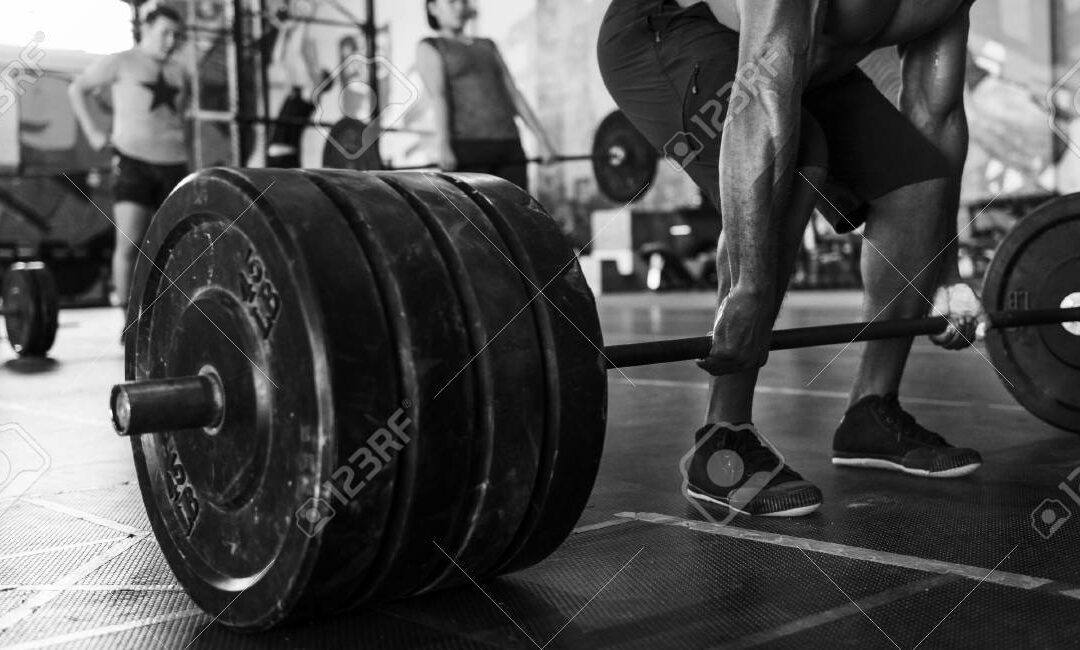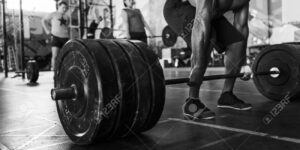The Importance of Deadlifts
A deadlift is a compound exercise that works multiple muscle groups, especially the glutes, hamstrings, lower back, and core. Here’s a step-by-step guide to performing a deadlift safely:
- Set Up the Barbell:
- Place the barbell on the floor with weights appropriate for your skill level.
- Stand with your feet about hip-width apart, with your toes slightly pointing outward.
- Position the barbell over the middle of your feet, close but not touching your shins.
- Grip the Barbell:
- Bend at the hips and knees to reach down, gripping the bar just outside of your knees.
- Use either a double-overhand grip or a mixed grip (one hand over, one hand under) for added control.
- Set Your Back:
- Pull your shoulder blades back and down to engage your lats, creating tension in your upper back.
- Keep your chest up and core tight, ensuring a neutral spine (not rounded or hyperextended).
- Lift the Barbell:
- Drive through your heels, pushing the floor away as you straighten your legs.
- Keep the bar close to your body, letting it slide up your shins.
- Extend your hips and knees together to stand upright, locking out at the top with your shoulders pulled back.
- Lower the Barbell:
- Hinge at your hips to begin the descent, keeping the bar close to your body.
- Bend your knees slightly as the bar passes them, lowering it back to the ground in a controlled manner.
Tips:
- Form over weight:Start with light weights to focus on form.
- Engage your core:Keep your abs braced to protect your spine.
- Breathing:Inhale before lifting, exhale as you lock out at the top.
- Avoid rounding your back:This can lead to injury; maintain a neutral spine throughout.
Practicing with lighter weights or a trainer can help ensure proper form as you progress with heavier weights.
Benefits of Deadlifts
- Total-Body Strength Development
- Deadlifts engage multiple major muscle groups, including the glutes, hamstrings, quadriceps, core, lower back, upper back, and forearms.
- This compound movement helps build overall strength, enhancing your ability to lift, carry, and move heavy objects in daily life.
- Improved Posture
- By strengthening the posterior chain (the muscles along the back of your body), deadlifts help correct posture, especially for individuals who spend long hours sitting.
- They encourage proper spinal alignment and teach you how to lift with your legs rather than your back, reducing the risk of injury.
- Boosts Functional Fitness
- Deadlifts mimic real-life movements, such as picking up groceries, lifting furniture, or playing sports. Training these movement patterns improves your functional strength and coordination.
- Enhances Core Strength
- While deadlifts are primarily lower-body exercises, they also demand significant core engagement to stabilize the spine and maintain balance during the lift.
- A stronger core improves overall athletic performance and reduces the risk of lower back injuries.
- Increases Bone Density
- The heavy load of deadlifts promotes bone growth, increasing bone density and reducing the risk of osteoporosis over time.
- Improved Grip Strength
- Holding a loaded barbell challenges your grip, which translates to better performance in activities requiring strong hands, such as rock climbing or manual labor.
- Improved grip strength also benefits other exercises like pull-ups and rowing.
- Boosts Metabolism
- Deadlifts recruit a large number of muscle groups, making them metabolically demanding. This results in higher calorie burn during and after the workout.
- Supports Athletic Performance
- Deadlifts improve power, speed, and explosiveness, which are crucial for athletes in sports that require running, jumping, or quick changes of direction.
Why Deadlifts are Functional
Deadlifts train movements that are fundamental to human biomechanics. They reinforce safe and efficient movement patterns that you use in everyday life. Whether you’re picking something off the ground, carrying heavy objects, or bracing against forces, deadlifts teach you to use your body effectively and reduce the risk of injury.
Additional Benefits
- Customizable: Deadlifts can be modified (e.g., sumo deadlifts, trap-bar deadlifts, Romanian deadlifts) to suit individual goals, mobility, and strength levels.
- Minimal Equipment: All you need is a barbell and weights, making deadlifts accessible for home or gym workouts.
- Mental Toughness: The challenge of lifting heavy weights fosters discipline, resilience, and confidence.
Precautions
- Proper form is essential to maximize benefits and prevent injury. Start with lighter weights and focus on technique before progressing to heavier loads.
- Consult a trainer or coach if you’re new to deadlifts to ensure you’re performing them safely and effectively.
By including deadlifts in your routine, you’ll not only build a stronger and more capable body but also enhance your quality of life with better functionality, posture, and resilience.
Get Your Copy of: Be Simply Fit
The Benefits of Walking With A Weighted Vest
Walking is a low-impact, accessible form of exercise that offers numerous health benefits, including improved cardiovascular fitness, mental clarity, and overall well-being. However, adding a weighted vest to your walking routine can elevate these benefits significantly. A weighted vest increases the intensity of your workout, engaging more muscles and boosting calorie burn. Below, we explore the key advantages of incorporating a weighted vest into your walking regimen.
1. Enhanced Cardiovascular Fitness
Adding weight to your body forces your heart and lungs to work harder to supply oxygen to your muscles. This increased effort strengthens your cardiovascular system over time. Walking with a weighted vest can simulate the effects of hiking or walking uphill, providing a more challenging workout that improves endurance and heart health.
2. Increased Calorie Burn
One of the most noticeable benefits of walking with a weighted vest is the extra calories burned. The additional weight requires your body to exert more energy, leading to a higher metabolic rate during and after your walk. For those aiming to lose weight or maintain a healthy weight, this added calorie burn can be a significant advantage.
3. Improved Muscle Strength and Endurance
Wearing a weighted vest activates more muscle groups, particularly in the core, legs, and back. As your body adapts to the extra load, these muscles become stronger and more durable. Over time, this can lead to better posture, reduced risk of injury, and enhanced overall strength.
4. Bone Density Enhancement
Weight-bearing exercises, such as walking with added resistance, are excellent for improving bone density. The additional weight creates a greater stimulus for bone growth, which is particularly beneficial for older adults or those at risk of osteoporosis. This added load can help maintain or even increase bone strength over time.
5. Improved Balance and Stability
The extra weight from a vest shifts your center of gravity, challenging your body to stabilize itself with every step. This increased demand on your stabilizing muscles helps improve balance, coordination, and proprioception (awareness of your body’s position in space). Better balance reduces the risk of falls and enhances overall movement quality.
6. Time Efficiency
For individuals with a busy schedule, walking with a weighted vest allows you to achieve a more intense workout in less time. The added weight increases the difficulty of a standard walking session, making it comparable to a moderate-intensity workout without requiring additional hours.
7. Supports Functional Fitness
Functional fitness refers to the ability to perform daily activities with ease. Walking with a weighted vest mimics the experience of carrying loads in real life, such as groceries or a backpack. Training your body in this way enhances your ability to handle physical demands in everyday scenarios.
Tips for Safe and Effective Use
If you’re new to walking with a weighted vest, follow these guidelines to maximize benefits and minimize the risk of injury:
• Start Light: Begin with a vest that adds 5-10% of your body weight and gradually increase the weight as you build strength and endurance.
• Maintain Proper Posture: Keep your back straight, shoulders relaxed, and core engaged to avoid strain.
• Choose the Right Fit: Use a vest that fits snugly but comfortably to prevent shifting during your walk.
• Gradually Increase Intensity: Incorporate weighted vest walks into your routine a few times a week, gradually increasing the duration and frequency.
• Stay Hydrated: The added weight can make you sweat more, so ensure you drink enough water before, during, and after your walk.
Conclusion
Walking with a weighted vest is a simple yet effective way to enhance your fitness routine. It boosts cardiovascular health, increases calorie burn, strengthens muscles, and improves bone density and balance. Whether you’re a fitness enthusiast or someone looking for an efficient way to stay active, adding a weighted vest to your walks can help you achieve your health and fitness goals. Remember to start light, progress gradually, and listen to your body to enjoy a safe and rewarding experience.


